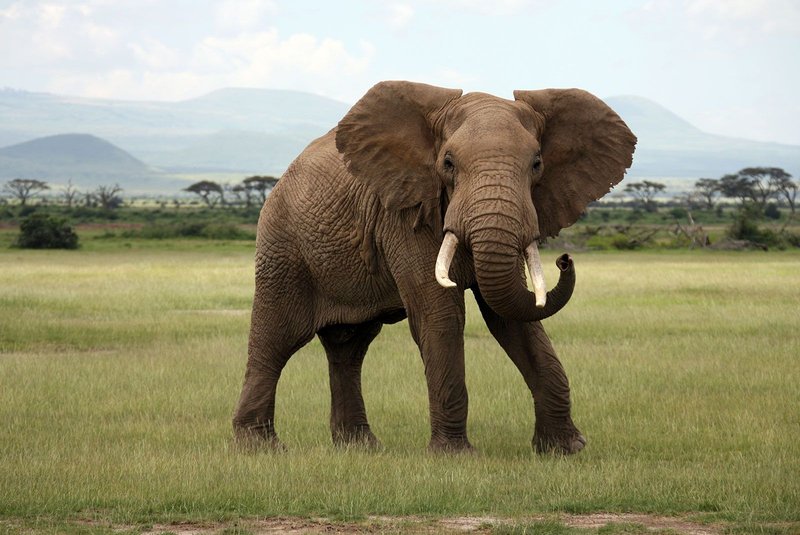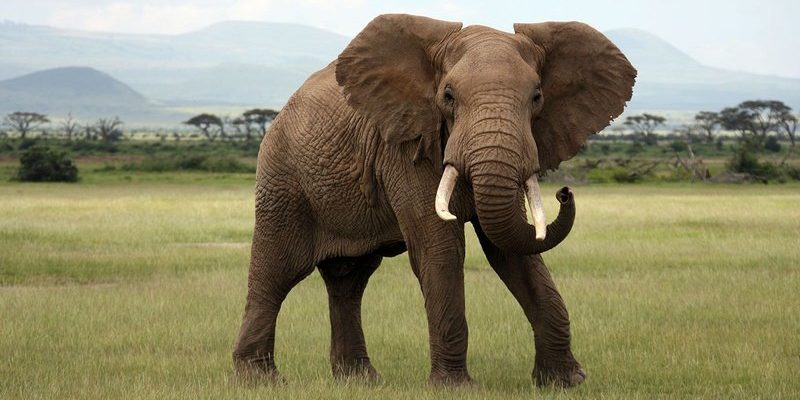
Did you know that African bush elephants are the largest land animals on Earth? It’s almost hard to believe when you see them in documentaries, but these magnificent animals not only carry a heavy physical presence but also a significant environmental responsibility. They help shape their habitats, making space for other wildlife. If you’re curious about what makes these elephants so special, grab a seat, and let’s explore ten fascinating facts that might just change how you view these incredible animals.
The Size and Strength of Giants
When we talk about the African bush elephant, we’re discussing some serious heft. These elephants can weigh anywhere from 5,000 to 14,000 pounds! To put it in perspective, that’s roughly the weight of a small car. Their size alone makes them awe-inspiring, but it’s their strength that truly stands out. These elephants can push down trees with ease, which is essential for maintaining their habitat.
The average height of an African bush elephant at the shoulder is about 10 to 13 feet. Imagine standing next to one—it’s like gazing up at a two-story building! Their large ears aren’t just for show; they actually help regulate their body temperature. When it’s hot, they fan their ears like giant, leafy umbrellas, cooling down their blood before it circulates throughout their massive bodies.
Social Structures and Family Ties
Here’s the thing: African bush elephants are incredibly social animals. They live in herds that typically consist of mothers, daughters, and their offspring. This matriarchal structure is fascinating because the oldest female usually leads the group. She’s like the wise grandmother, navigating her family safely through foraging areas and watering holes.
You might be wondering how these elephants communicate. They use a range of vocalizations, from trumpets to low rumbles that can travel through the ground. This is crucial for keeping the herd connected, especially in dense forests or during long migrations. These strong family bonds mean that even if a calf is separated from its mother, other females will often step in to help care for it. That’s a beautiful example of community!
Elegant Feeding Habits
When it comes to eating, African bush elephants are like living lawnmowers. Their diet primarily consists of grass, leaves, fruits, and bark. An adult elephant can consume up to 300 pounds of food in a single day! Yes, you read that right. To satisfy their enormous appetites, they spend around 16 hours a day feeding. It’s a full-time job, but it’s crucial for their survival and the health of their habitat.
What’s interesting is how they impact their environment while they feed. By uprooting plants, they create pathways for other species, allowing more light to reach the forest floor. This, in turn, promotes new growth. Plus, when elephants eat fruits, they help in seed dispersal, which has a significant role in plant reproduction. They’re like nature’s gardeners, ensuring the ecosystem thrives!
A Unique Sense of Communication
Have you ever heard of “infrasound”? It’s a form of communication that elephants utilize, and it’s quite fascinating. African bush elephants produce sounds that are below the range of human hearing, often traveling several miles. This means they can communicate over vast distances without us ever noticing.
But that’s not all! Elephants also communicate through body language. You might see them touching one another with their trunks, which can be a sign of affection or reassurance, much like a comforting hug. They even have distinct vocalizations for different situations, whether it’s warning the herd of danger or celebrating a joyful reunion. Their communication skills are much more complex than we often realize.
Long Lifespan and Intelligence
African bush elephants are known for their longevity, often living up to 60 or 70 years. This extensive lifespan means they accumulate a wealth of knowledge over the years. Just like we learn from our experiences, these elephants pass down essential survival skills to younger generations.
Their intelligence is remarkable. Researchers have observed elephants displaying behaviors that suggest problem-solving abilities, self-awareness, and empathy. For instance, they might help an injured family member, demonstrating a deep emotional connection. Honestly, this level of intelligence is something that makes them stand out from many other animals on the planet.
Threats to Survival
As magnificent as they are, African bush elephants face significant threats. One of the most pressing issues is poaching for their ivory tusks. Despite international bans, illegal poaching continues to threaten their population. It’s heartbreaking to think about how these gentle giants are hunted for something as unnecessary as decorative items.
Additionally, habitat loss due to agriculture and human development puts immense pressure on their survival. As their natural environments shrink, elephants are forced to venture into human-populated areas, often leading to conflicts. This situation can be dire for both the elephants and local communities. To ensure their survival, conservation efforts are vital to protect their habitats and combat poaching.
Cultural Significance
African bush elephants hold immense cultural importance in various communities across Africa. They are often seen as symbols of strength, wisdom, and longevity. In many cultures, elephants are celebrated in art, folklore, and rituals. For instance, in some African societies, they embody the spirit of the ancestors, representing protection and vitality.
This cultural reverence highlights why conservation efforts are essential. By preserving elephant populations, communities not only protect a critical part of their natural heritage but also maintain their cultural identity. It’s inspiring to see how intertwined these majestic creatures are with human culture.
Exploring the world of the African bush elephant reveals so much more than meet the eyes. From their immense size and social connections to the challenges they face, these gentle giants truly deserve our awe and respect. Understanding these facts isn’t just about appreciating them; it’s about recognizing our role in their survival. Every effort counts, whether it’s supporting conservation initiatives or spreading awareness about their plight.
So, the next time you hear about elephants, remember their strength isn’t just in their size—it’s also in their relationships, intelligence, and the way they shape their environment. Let’s cherish and protect these incredible animals for future generations.

